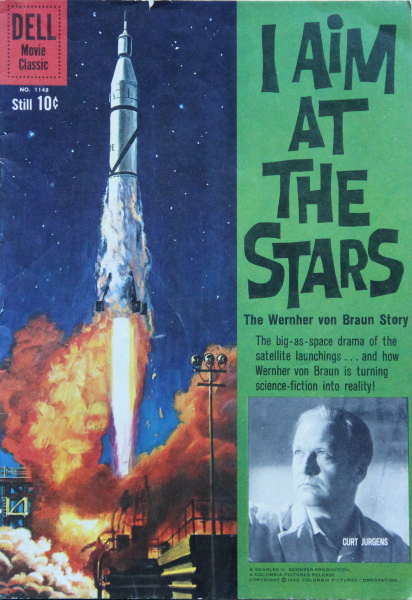Erica Frank and I have both extolled the virtues of superhero comics; I pumped Marvel while she was a National fan. Now, famed comics expert Jason Sacks weighs in, mostly to tell us that Erica's taste is far better than mine. He's probably right…

by Jason Sacks
Several weeks ago, the Traveler posted a short, mostly complimentary review of the new Marvel Comic The Fantastic Four. He liked the comic’s heady mix of fact and science fiction, as well as its inclusion of a female character in its cast.
That review troubled me because it praises material I consider to be second rate. Marvel is, unfortunately, a schlock-house. Several years ago Marvel specialized in Twilight Zone-style twist-in-the-tail yarns (which the Traveler discussed in 1959). Recently, though, Marvel’s output has descended into juvie monster stories. The Fantastic Four #1 is not much more than a full-length version of those same moribund tales with the addition of derivative super-powers. The ugly art from Jack Kirby only makes things worse. He should go back to drawing love comics and leave heroes alone. I can confidently say Jack Kirby has no future in costumed-hero comics.
A look of the covers of any month’s releases from this second-rate publisher proves this point. The enormous monster on the cover of The Fantastic Four#1 is similar to the titanic creature featured in nearly every other Marvel book released recently. The outrageous Monsteroso from the October Amazing Adventures #5, the Mohawked Brutto in the October Tales of Suspense #22, and the ridiculous green giant Fin Fang Foom in that same month’s Strange Tales #89 all fit the same general template.
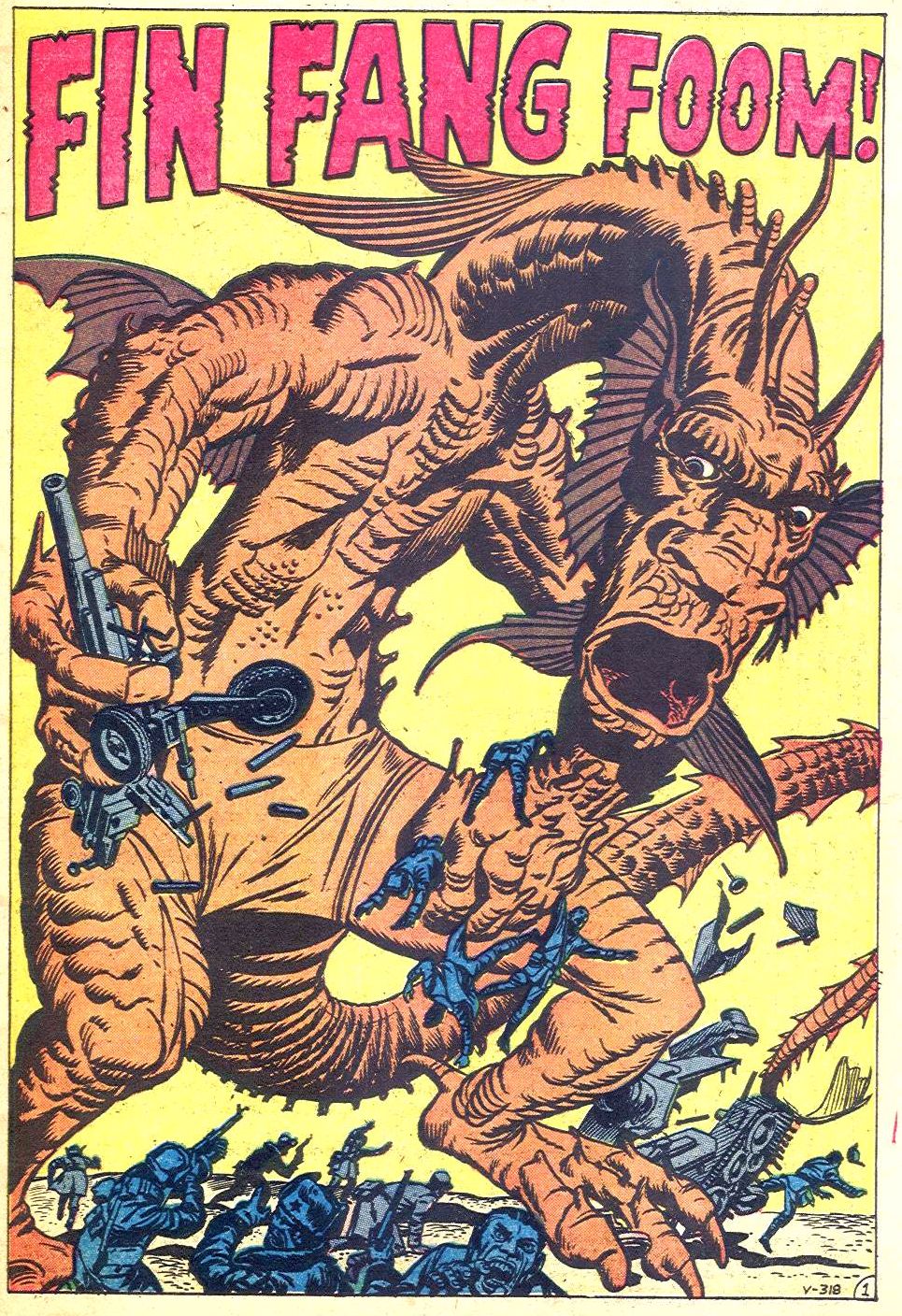
the Marvel monster who wears shorts!
These Marvel creatures are all bites from the same rancid apple. They represent a juvenile collection of clichés and ridiculousness barely suited for even the most dilapidated drive-in.
Conversely, industry leader National Comics is delivering truly outstanding science fiction comics. In comics like The Flash, Green Lantern and the new Atom a team of talented creators deliver tales that combine fiction and fact in ways that should make people like John W. Campbell smile.
I beg a little indulgence as I tell you about the fascinating Mr. Julius Schwartz, the editor of those comics. Schwartz is one of the leading lights of older style science fiction fandom and pro-dom. In fact, he was a pioneering fan. With Forrest J. Ackerman and Mortimer Weisinger (himself an editor at National, on the Superman titles), Schwartz co-published one of the first “fanzines,” The Time Traveler, in 1932. That mimeographed masterpiece caught the eyes of fans and pros alike. In it, the writers and editors praised the writing of many of the greatest writers of the field while also presenting fiction by aspiring pros.

A rare copy of the fanzine that started the career of the brilliant Mr. Schwartz, Time Traveler. Note future National Comics editor Mortimer Weisinger is also listed on the masthead, as is the famous “pro-fan” Forrest J. Ackerman.
That ‘zine caused a small sensation among fans and professionals. It led to all three men moving into the field full time. Schwartz opened the Solar Sales Service agency, where he represented writers such as Howard Philips Lovecraft, Alfred Bester and Ray Bradbury. After a decade as an agent, the owners of All-American Comics tapped Schwartz to join their staff as an editor on their line of super-heroes including Green Lantern, Dr. Mid-Nite, Hawkman and The Flash. As he gained experience at All-American, and as AA merged with National Comics, Schwartz moved into science fiction comics. He established himself there as a notable editor on such brilliant sci-fi titles as Strange Adventures and Mystery in Space. Those latter two series were perhaps the finest sci-fi comics published since the amazing E.C. Comics disappeared in 1954.
Schwartz brings his same passion for science fiction to his editing of super-hero comics. He also evokes fond memories for longtime fans. The great editor mines for creative gold in places that revive memories of the past while evoking the jet age in which we live. He has set to work reviving the names of some of the members of the much beloved Justice Society of America (moribund since 1951). As part of that effort, our man Schwartz has delivered to readers sleek new versions of such revered names as the Flash, Green Lantern, Hawkman, and (his latest revival) The Atom.
On “The Atom”, Schwartz collaborates with writer Gardner Fox (a veteran of such magazines as Amazing Stories and Weird Tales) and artist Gil Kane. The background of our new hero has a solid foundation in the same sorts of ideas you might discover each month in the pages of Worlds of If.
The Atom is scientist Ray Palmer (named after the editor of such notable publications as Amazing Stories, Imagination and Other Worlds). He is a researcher at Ivy University investigating matter compression as a means for fighting overpopulation. Palmer has a breakthrough and finds he is able to shrink matter. In typical style, when he sets aside his research to indulge in a little fun, Palmer finds himself in an emergency. To save himself and his girlfriend, Palmer uses the shrinking ability and discovers he has amazing abilities. I anxiously await the second part of Palmer’s saga next month in Showcase #35.
Ray Palmer represents the destiny of America as an outgrowth of scientific discovery. Green Lantern represents our aspirations in space. As President Kennedy reminds us, America will be going to the moon and beyond in the next century. If that is true, I want our astronauts to be like Hal Jordan. He is a test pilot who has no fear. Jordan is ready to battle whatever evil comes his way – even in the far future.
In his September/October issue number 8, Jordan travels into the 58th century. The residents of that long-away century draft Jordan to become the leader of their great society.
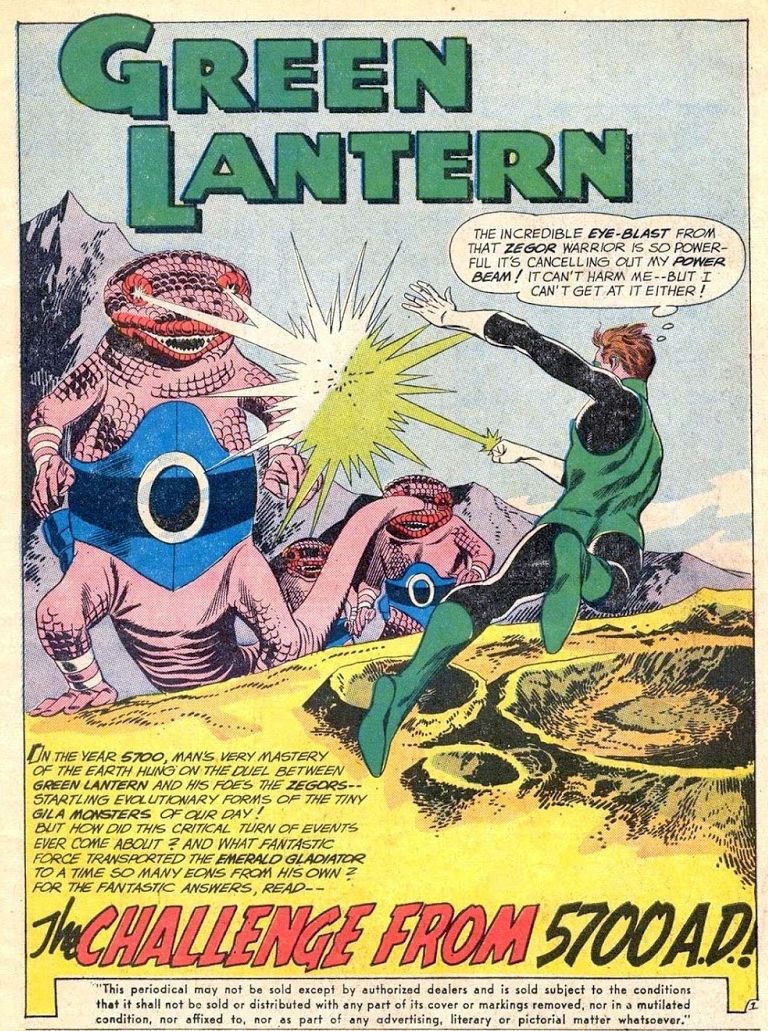
Green Lantern travels into the far future to fight these surprising beasts
In fact, Green Lantern is already a member of another great society. Hal discovered in Green Lantern #6 (May/June 1961) that he is the member of a kind of extraterrestrial police force led by a group calling themselves the Guardians of the Universe. That idea seems ripped right from the pages of many classic pulp magazines, but with a modern twist. With sleek art by Kane, this series has rocketed to the top of many fans’ reading lists.
While The Atom and Green Lantern present some of the smartest sci-fi action comics of all time, Schwartz’s crown jewel has to be The Flash.
This new Flash takes his cue from the much-beloved 1940s Flash. As with Green Lantern, however, this is a modern Flash tailored for Baby Boom readers. The new Flash is crewcut cop Barry Allen, who donned a sleek red suit to become the fastest man alive. Since moving into his own solo comic in 1959, The Flash has presented some delightful science-oriented tales. That has included clever descriptions of friction, atomic cohesion and even the theory of continental drift. Each of these adventures have been drawn by Carmine Infantino, a brilliant cartoonist uniquely equipped to deliver sleek, delightful line work.
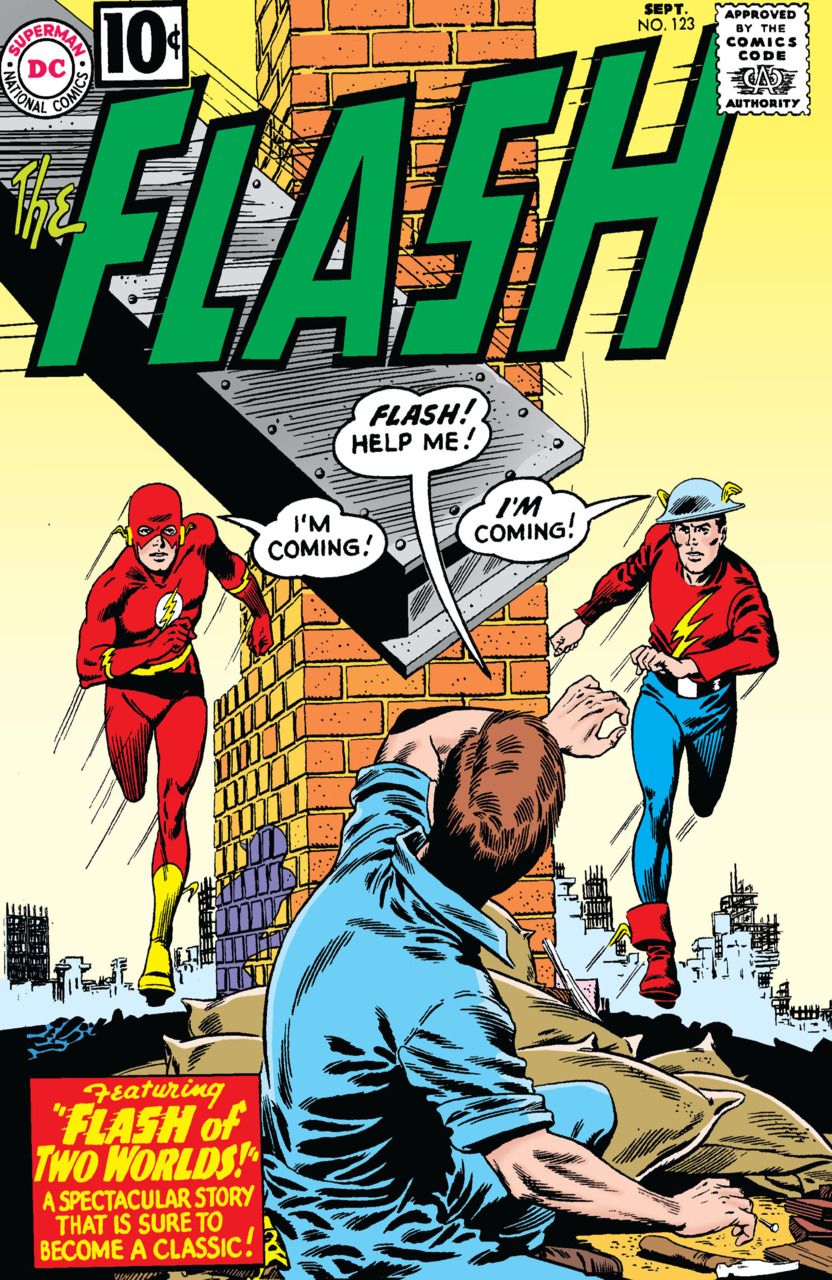
The cover to the brilliant “Flash of Two Worlds”
The story par excellence, the chapter that shows Schwartz’s incomparable intelligence, is The Flash #123, the September 1961 issue. That month, the creative team pulled off an idea I never expected to witness: the chance to see Barry Allen and Jay Garrick racing alongside each other. Though Barry imagined the original Flash was just comic book star, he actually was able to meet his idol.
How did Barry manage that amazing trick?
Through one of the cleverest ideas I’ve ever come across: parallel worlds.
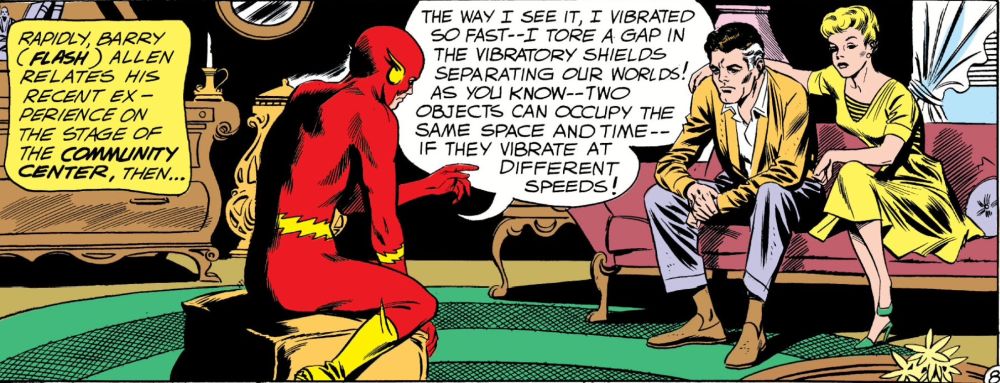
an explanation of parallel worlds
Parallel worlds! What a clever concept. This idea is a brilliant revelation for a reader such as me. Imagine a counterpart of yourself, the same but deeply different, existing in a dimension vibrating at a different frequency from ours. Imagine how their experiences would vary from yours, and how their world might contain subtle changes.
This clever, innovative idea struck me like a revelation. For us long-time readers of comics this seems a clear signal that the revival of the august Justice Society of America may be coming soon. That means we could witness Green Lantern and the Atom meet their counterparts. It also means the possible resurrections of classic heroes in new guises. If the Atom can be revived, how long will it be before we see Black Canary, Dr. Fate, even The Spectre?

Left to right, Mr. Schwartz, writer Otto Binder and editor Raymond Palmer.
Yes, my friend the Traveler can celebrate that badly drawn kid stuff over at tiny, decrepit Marvel. National Comics is the place to find brilliant science fiction in comic book form. Drop your dime for some of the comics edited by Julius Schwartz and tell me if you don’t agree.



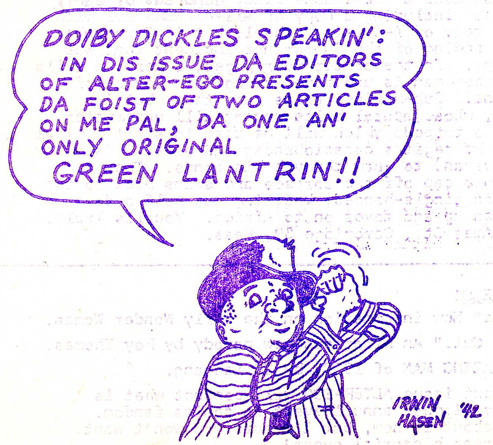
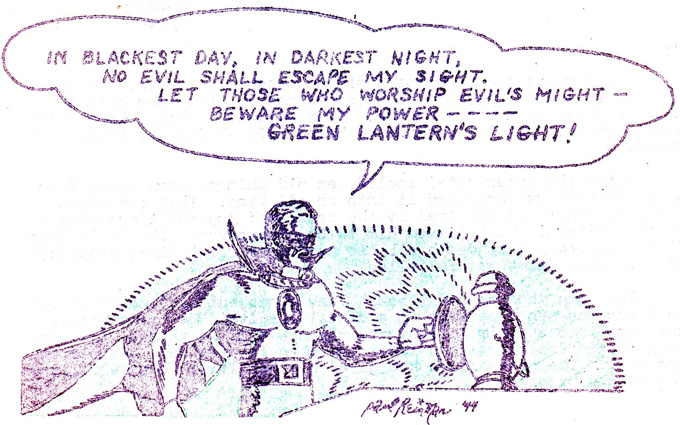
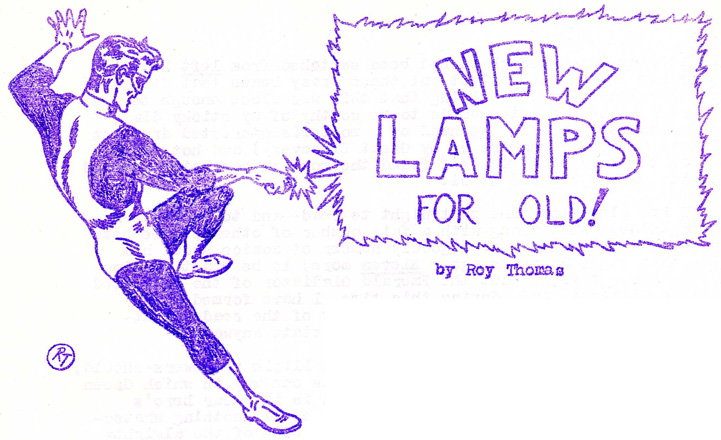

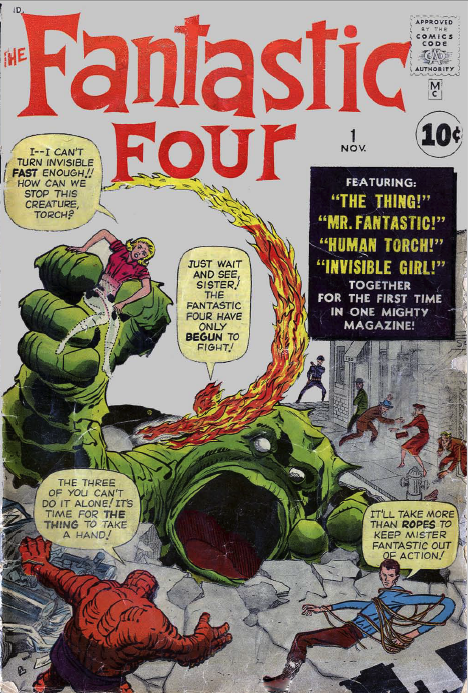







![[Nov. 21, 1960] <i>I aim at the Stars</i> (but sometimes I hit London)](https://galacticjourney.org/wp-content/uploads/2015/11/601121stars-412x372.jpg)


